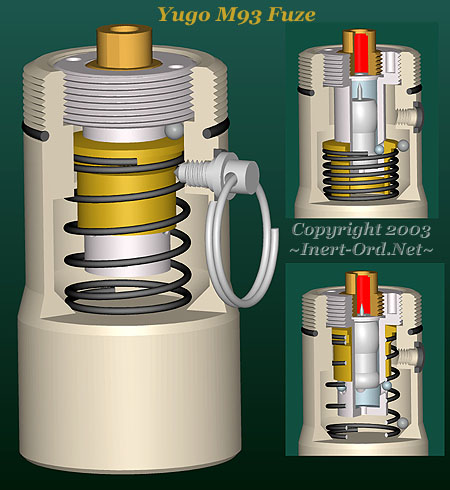 This is a 40mm hollow charge device, made of aluminum and plastic, with steel
balls molded into the warhead body for additional local fragmentation effect.
This is a 40mm hollow charge device, made of aluminum and plastic, with steel
balls molded into the warhead body for additional local fragmentation effect.Although the acronym HEAT (High Explosive Anti Tank) is still used, this would be more appropriately called an “anti-armor” grenade, as it would not have much effect on modern tanks.
Likely intended for armored troop carriers and similar targets.

As with all "hollow charge" munitions, most of the space inside the warhead is empty. The explosive filling the bottom third under a cone shaped metal liner (not shown).
